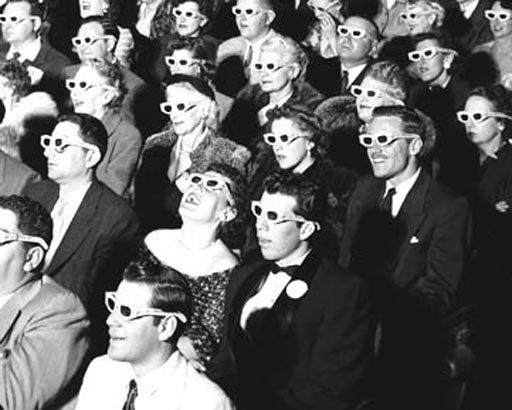The downside to 3DTV

The first issue is a serious lack of content. Apart from Avatar and The Adventures of Shark Boy and Lava Girl, there are very few 3D films in existence – in fact, only twelve movies were mastered in 3D in 2009 and so far 14 3D feature movies have been announced for release in 2010. Granted, film studios are starting to release more content for the platform, but there is an immense back-catalogue of movies that will remain in 2D, not to mention standard definition.
The second challenge will come from trying to upsell your existing client database to the newer technology. For many clients it will be difficult to justify spending more money on an installation that may have only been completed within the last 12-24 months, particularly if the technology isn’t fully realised.
ADVERTISEMENT
Further, in order to get true 3D content, you’ll also need access to 3D broadcasts or a 3D Blu-ray player and 3D movies, and 3D glasses – all of which signify additional cost.
But the biggest challenge may come from the health industry.
Mark Pesce is one of the early pioneers of virtual reality. In an article he wrote for the ABC’s The Drum Unleashed, he raised a serious mental health issue pertaining to 3D technology.
“It might look (like this is the decade for 3DTV), but we’d all better hope it turns out quite differently. You see, 3D is not good for you.
“Yes, the real world is definitely three-dimensional. But that’s where the similarity ends. What you’re shown on a movie screen – or soon, a television – is not true 3D. That’s the source of the problem.”
Back in the 1990s, Mark did a lot of development work in virtual reality – another technology destined to be the proverbial ‘next big thing’. He helped Sega develop a head-mounted display (fancy VR headgear) that could be plugged into the Sega Genesis (known as the Mega Drive in Australia).
Everything was “going swimmingly”, he says, until they sent the prototype units out for testing.
“Virtual reality headsets use the same technique for displaying 3D as we find in movies or 3D television sets – parallax. They project a slightly different image to each one of your eyes, and from that difference, your brain creates the illusion of depth. That sounds fine, until you realise just how complicated human depth perception really is.
“Since the various movie and television display technologies only offer parallax-based depth cues, your brain basically has to ignore several other cues while you’re immersed in the world of Avatar. This is why the 3D of films doesn’t feel quite right. Basically, you’re fighting with your own brain, which is getting a bit confused. It’s got some cues to give it a sense of depth, but it’s missing others. Eventually your brain just starts ignoring the other cues.
“That’s the problem. When the movie’s over, and you take your glasses off, your brain is still ignoring all those depth perception cues. It’ll come back to normal, eventually. Some people will snap right back. In others, it might take a few hours. This condition, known as ‘binocular dysphoria’, is the price you pay for cheating your brain into believing the illusion of 3D. Until someone invents some other form of 3D projection (many have tried, no one has really succeeded), binocular dysphoria will be part of the experience.
“This doesn’t matter too much if you’re going to see a movie in the theatre, though it could lead to a few prangs in the parking lot afterward, but it does matter hugely if it’s something you’ll be exposed to for hours a day, every day, via your television set.
“Your brain is likely to become so confused about depth cues that you’ll be suffering from a persistent form of binocular dysphoria. That’s what the testers told Sega, and that’s why the Sega VR system – which had been announced with great fanfare – never made it to market.
“Our testers realised that children – with their highly malleable nervous systems – could potentially suffer permanent damage from regular and extensive exposure to a system which created binocular dysphoria in its users. This is the heart of my concern, because 3D television is being pitched as an educational medium – Discovery Channel has announced 3D broadcasts will begin mid-year and that medium could damage the growing minds it is intended to enlighten.
“All of this is rolling forward without any thought to the potential health hazards of continuous, long-term exposure to 3D. None of the television manufacturers have done any health and safety testing around this. They must believe that if it’s safe enough for the cinema, it’s fine for the living room. But that’s simply not the case. Getting a few hours every few weeks is nothing like getting a few hours every single day.
“One of two things is about to happen: either 3D television will quickly and quietly disappear from the market, from product announcements, and from broadcast plans, or we’ll soon see the biggest class-action lawsuit in the planet’s history, as millions of children around the world realise that their televisions permanently ruined their depth perception.”
-
ADVERTISEMENT
-
ADVERTISEMENT

